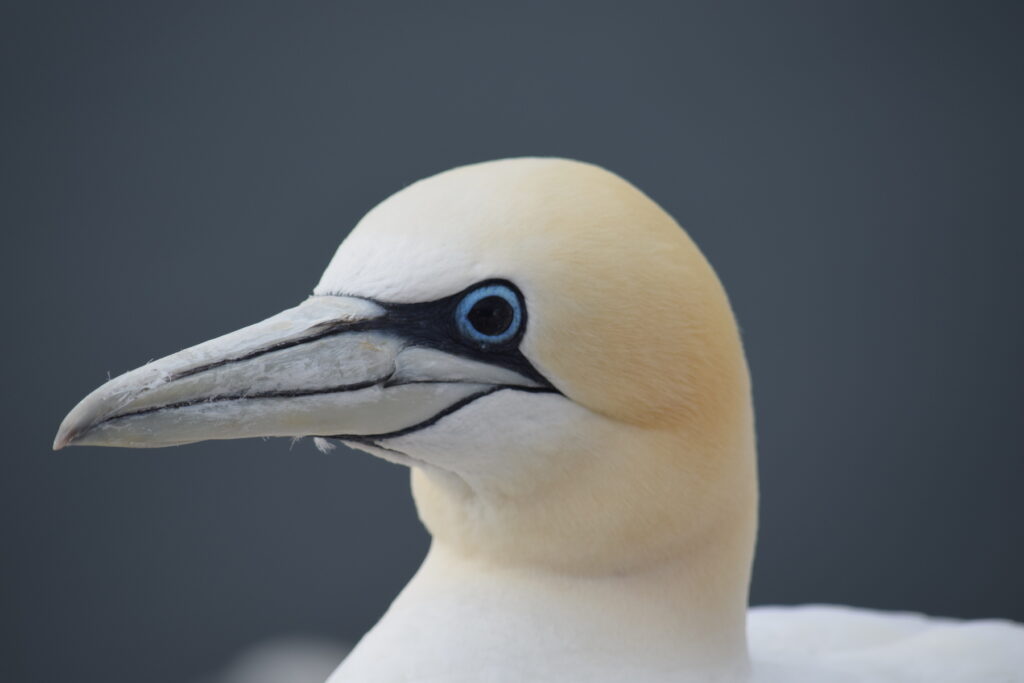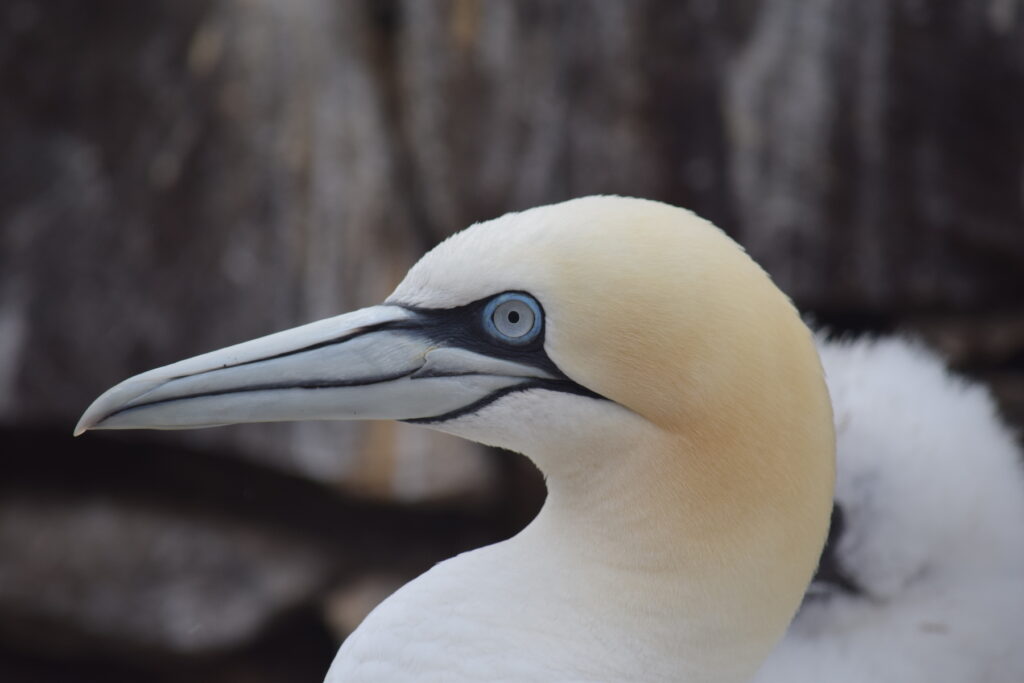Birds able to survive avian flu left with ‘black eyes’
4th May 2023
Scientists have discovered that Northern Gannets can recover from highly pathogenic avian flu H5N1, leaving them with an unusual black iris colouration.

Northern Gannet displaying a black iris, linked to a previous infection with highly pathogenic avian influenza. © Jude Lane
Black eyes, rather than the usual pale blue seen in Northern Gannets, were first seen in birds breeding on Bass Rock, Scotland, in June 2022, with colour varying from completely black to mottled.
Scientists from multiple organisations took blood samples for APHA testing, from 18 apparently healthy adult Gannets with both normal and black irises. Eight birds tested positive for bird flu antibodies, of which seven had black irises.
“This has been a fascinating development and the discovery may prove a useful non-invasive diagnostic tool,” explained lead author and RSPB conservation scientist Dr Jude Lane.
“The next steps are to understand its efficacy, if it applies to any other species and whether there are any detrimental impacts to the birds’ vision. Ophthalmology exams will also be needed to determine what is causing the black colouration.”
The research team investigated outbreak timings at colonies across the Gannet’s North Atlantic range. At Bass Rock in the UK, its largest colony, a detailed study explored the impact of the virus on colony size, breeding success and adult survival – as well as whether they were able to survive H5N1.

Northern Gannet with a normal iris. © Jude Lane
“Severely impacted”
The current H5N1 avian flu strain has seen shifts in both the timings of outbreaks and species affected, including seabirds. Northern Gannets appear to have been severely impacted.
Large numbers of dead Gannets were seen in Iceland during April last year, followed outbreaks in many Scottish colonies, Canada, Germany and Norway.
By the end of June, outbreaks had occurred in five Canadian colonies and in the Channel Islands. Outbreaks in 12 UK and Ireland colonies followed in a clockwise pattern with the last infected colonies recorded in September.
Unusually high mortality was recorded at all but one of the 41 monitored colonies (75% of the North Atlantic colonies).
Susan Davies, CEO of the Scottish Seabird Centre said: “Like many northern gannet colonies across the North Atlantic, the Bass Rock was severely impacted in 2022 by highly pathogenic avian influenza.
“Due to the long running research effort on the Bass Rock, it was possible to gain important insights into the changes taking place in the colony with a strong link emerging between virus infection and the changing iris colour in these striking seabirds and the high level of nest failure within the study area.”
Researchers calculated that adult survival between 2021 and 2022 was 42% lower than the preceding 10-year average. The full extent of how many birds died during that period won’t be confirmed until the birds come back this breeding season.
The 2022 bird flu outbreak was another significant stressor to those already faced by our rapidly declining seabird populations. Seabirds are the among the most threatened group of birds, with 24 out of 25 species breeding in the UK being Red or Amber on the UK list of Birds of Conservation Concern.
The study was a collaboration between the RSPB, the University of Glasgow, the University of Edinburgh, Heriot Watt University and the Animal Plant Health Agency in partnership with the Scottish Seabird Centre.
